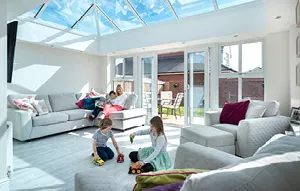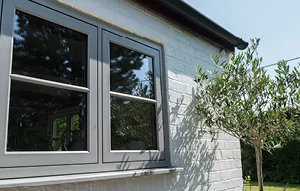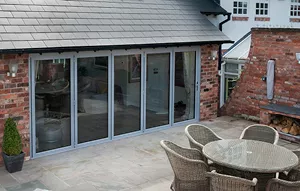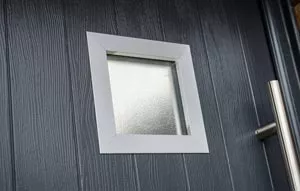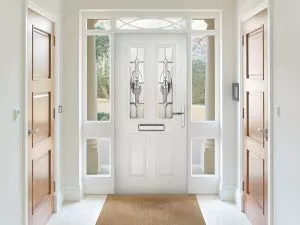What's the difference between flush and casement windows?
It firstly helps to know that the casement refers to the moving part of the window, i.e., the bit that opens and closes. In a standard or ‘lipped’ window, its casements sit proud of the surrounding window frame.
The flush casement window includes casements that are exactly level with the window frame, explaining why it has such an immaculate and minimalist look. The easiest way to spot the differences is to put the two designs next to each other and they’ll quickly be identifiable. You can do this in either of our showrooms.
If you’re looking for an upgrade, these flush casement styles are an excellent choice for replacement windows due to their sleek, modern appearance.
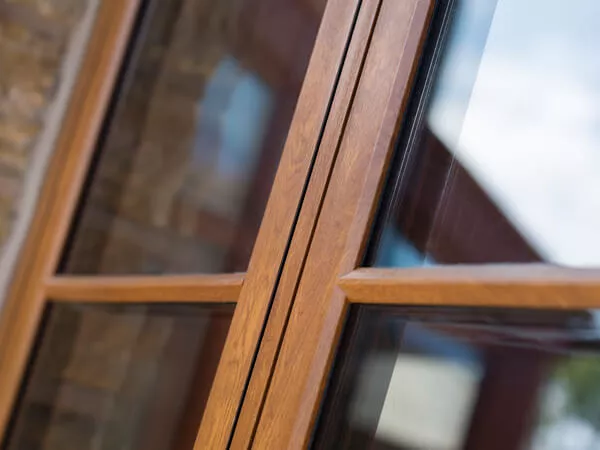
Shall I buy double glazing or triple glazing?
In a double glazed window unit, there are two panes of glass, while a triple glazed window unit contains three glass panes. There are multiple benefits to both products and they can be explained to you by one of Trent Valley’s helpful consultants.
They can be summarised as such. A triple glazed window provides a higher level of insulation and is more effective at keeping out draughts. It can be configured in a certain way to help it also reduce the impact of noise from the outdoors, which will be a relief for anyone pestered by noise on a busy road.
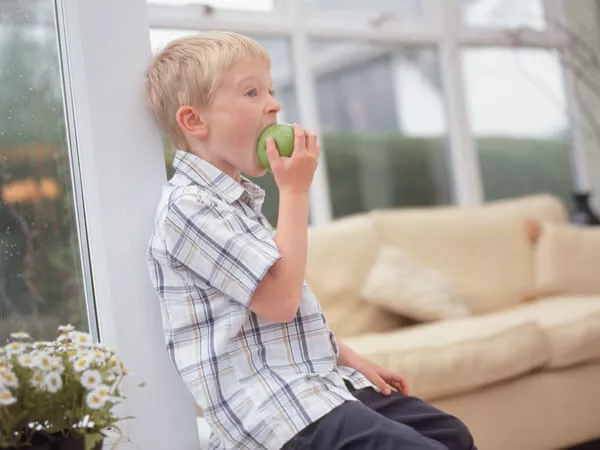
MORE COMMON QUESTIONS
If you have any questions at all, you can always go to one of our advisors for an answer. Your question might be listed amongst our common questions section.
What’s the difference between a PVC, PVCu and UPVC window?
There isn’t any difference and to make things even more confusing, their official name is PVC-U windows.
UPVC windows became PVCU windows in the UK in the late 1980’s so that they were consistent with fellow European countries.
It’s thought they were called PVC-U windows because European languages mostly place the noun (being PVC in this case) before the adjective (U).
‘PVC’ is the abbreviated form of Poly Vinyl Chloride, and the ‘U’ stands for Un-plasticised. Poly Vinyl Chloride must be modified when used to produce shoes, fake leather, and bags. It’s products like these that make us so familiar with the ‘PVC’ name.
You cannot use pure PVC-U for the manufacturing of windows and doors as several additives are needed to ensure that it can endure, resist the weather and UV rays. The additives are also required to create the traditional white finish that’s typically found in windows and doors.
What window colour options do you have?
You’ll be glad to know that white isn’t our only coloured finish, not that there’s anything wrong with white! We have a very broad colour palette for our window designs.
White takes its place on the colour palette alongside finishes like Hazy Grey, Anthracite Grey, Matt Black, and Olive Grey and this doesn’t even come close to touching upon the many other shades that we have in stock.
For a start, we also have a variety of woodgrains, including Rosewood, Walnut and Oak, and a host of other wood effects, and that’s before we even mention Chartwell Green, Steel Blue, and Dark Red.
How about combining two colours? This will allow you to have one finish on the outside of the window and a different finish externally.
What are ‘A’ rated windows?
The Window Energy Rating (WER) of a window tells you how energy efficient the design is. It’s very similar to the energy rating system that’s used for white goods e.g., fridges, freezers, washing machines, with modern replacement windows being energy rated from A+ – G.
Currently, the most energy efficient window available in the UK is an A+ rated window, defined by the BFRC Rating Scheme. The system was introduced so that customers can easily identify the energy efficiency offered by a window and whether it complies with Building Regulations.
If you have the budget for A or A+ energy rated windows, it’s certainly worth buying them so that you profit from outstanding energy efficiency.
All new and replacement windows MUST have a WER or C or above. Talk to an advisor in more detail about WERs.
What does U-Value mean?
A window’s U-Value informs you of how successful it is at retaining heat and preventing it from leaking out of a house. U-Values are measured in Watts per square metre or W/m2 K. The lower the U-Value number, the better the heat retention of the window.
The minimum allowed U-Value for new and replacement windows is 1.6 W/m2 K. Discuss U-Values with one of our advisors if you’d like to know more about them.
What is Secured by Design?
Secured by Design has the full backing of the Police and is a scheme that’s dedicated to improving the security of buildings and their most immediate surroundings to help people feel safer in them.
SBD’s product-based accreditation scheme – the Police Preferred Specification – is the recognised standard for products that are specifically designed to minimise crime. It includes domestic windows and doors, and their various components, e.g., locks and hinges.
The bulk of our product range satisfies the SBD standard as our sister manufacturing company, Conservatory Outlet, is an approved member of the scheme. If home security is one of your biggest concerns, let your advisor know when planning your windows.
Do you make your windows?
Trent Valley Windows is one of Conservatory Outlet’s Premium Retailers and the Wakefield-based company is one of the UK’s leading window and doors makers. They have a hi-tech window and door manufacturing facility in West Yorkshire.
Being so closely aligned to our manufacturer gives us the privileged position of being able to monitor our supply chain and check that our window products meet our expectations.
How much will new windows and doors cost me?
We wouldn’t like to estimate a figure until we have had a good chat with you first and know more about what you’re looking for.
Your chosen window style will be carefully tailored for your home so that it matches its openings and fittings. We also need to be advised of your preferences in terms of colour and performance, and prior to the installation, we must measure up at your house.
Organise a FREE consultation with Trent Valley Windows so that we can properly discuss things in your home or in one of our showrooms. Virtual appointments are also available.
Put your details into the contact form and we will be in touch to arrange an appropriate time and date.
How long will a design appointment take?
On average, it will last for around 1 hour. This is usually enough time for the designer to get an understanding of the project, take any measurements from you and to suggest some window solutions that could meet the brief.
How long will it take for the windows to be fitted?
Replacement window projects are all very different, so it’s difficult to provide a precise timescale. The number of windows that need to be fitted will have a bearing on things and the complexity of the project will also be a factor. If it’s a full house of windows, it’s likely to take about 3-4 days to complete. Your advisor will give you an estimate of timescale.
NEED MORE INSPIRATION? REQUEST A BROCHURE
Simply select the brochure(s) you would like to browse, fill in your details, and then click ‘Download’.
Step 1 - Please select the brochure(s) you would like:
NEED MORE ANSWERS?
Simply fill in your details below and one of our customer advisors will get in touch to answer any of your questions.



